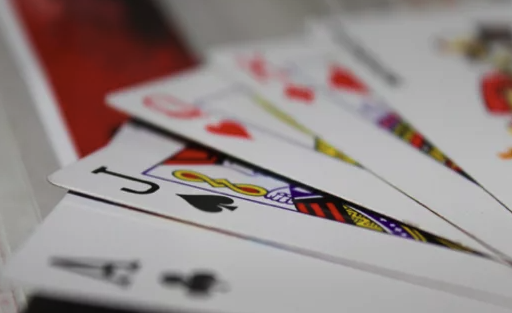Glossary Term
Pocket Pair
Pocket Pair
Used In: Poker
Introduction
A pocket pair in poker refers to a starting hand in which both of a player's hole cards are of the same rank, such as two Kings or two Sevens. This occurs in games like Texas Hold'em and Omaha, where players are dealt two private cards at the beginning of each hand. Pocket pairs are among the most statistically favorable starting hands because they provide a built-in pair before any community cards are revealed.
The strength of a pocket pair varies based on its rank. High pocket pairs, like Aces or Kings, are often considered premium hands with strong winning potential, particularly in pre-flop scenarios. Mid and low pocket pairs can also be valuable, especially when they improve to a three-of-a-kind, or “set,” after the flop. However, these hands are more vulnerable to being outdrawn and often require careful play depending on position, stack size, and the tendencies of opponents.
From a strategic perspective, pocket pairs allow players to apply pressure early in the hand or play for implied odds with the goal of hitting a set. Their value is not only in raw strength but also in the information they provide about potential hand ranges. Understanding how to play pocket pairs effectively—balancing aggression and caution—is a key component of successful poker strategy.
In Depth Look
A pocket pair occurs when a player is dealt two hole cards of the same rank at the start of a hand in games like Texas Hold’em. This hand type stands out because it offers a made pair before any community cards are dealt, giving players an early statistical edge. The likelihood of being dealt a pocket pair is approximately 6% (1 in 17 hands), making it a relatively uncommon but important event. These hands range in strength from low pairs like twos or threes to high pairs like aces or kings, with their relative power depending largely on the board texture and opponent behavior.
Strategically, pocket pairs are versatile and can be played in several ways depending on their rank. High pocket pairs (e.g., queens or better) are often strong enough to be played aggressively pre-flop and can dominate weaker hands. Medium and small pairs generally perform better when played with the goal of hitting a set on the flop, especially in deeper-stacked situations where the implied odds justify a speculative call. However, without improvement, lower pairs tend to lose value as the hand progresses, particularly on coordinated or high-card boards.
The strength of a pocket pair is not absolute—it depends on factors like position, stack sizes, table dynamics, and opponent tendencies. For instance, playing a low pocket pair from early position often carries more risk than playing it from the button, where more information is available. Pocket pairs also play a critical role in hand reading and range analysis, as recognizing when an opponent may be representing or holding one can influence key decisions. Effective use of pocket pairs involves a balance of pre-flop aggression, post-flop discipline, and situational awareness.
Key Takeaways:
- A pocket pair is a statistically favorable starting hand, dealt in about 6% of hands.
- High pairs can be played aggressively; lower pairs often rely on hitting a set to gain value.
- Strategic use depends on position, stack depth, and opponent tendencies.
Mechanics
Mechanically, a pocket pair is formed when both of a player’s hole cards are of the same rank—such as two 8s or two Queens—at the start of a hand. In Texas Hold’em, each player is dealt two private cards, and there are 13 possible ranks that can form pocket pairs. Since there are four cards of each rank in a standard 52-card deck, the chance of receiving any specific pocket pair (e.g., two Jacks) is about 0.45%, while the chance of being dealt any pocket pair is roughly 5.9%. These pairs are hidden from opponents and form the foundation of a player’s starting hand strength before the flop.
Once the flop, turn, and river are dealt, the strength of the pocket pair may improve depending on how it interacts with the community cards. If a third card of the same rank appears on the board, the player hits a “set,” which is significantly stronger than a simple pair and can often dominate two-pair or top-pair hands. Pocket pairs can also turn into full houses or even four-of-a-kind in rare cases. However, if no improvement occurs and higher community cards appear, even a high pocket pair can become vulnerable to overpairs or more complex hands. Understanding how the board texture affects the relative value of a pocket pair is critical to post-flop play.


Illustrated Example
Imagine you're playing a $1/$2 No-Limit Texas Hold'em cash game and are dealt two black eights: ♠8♣8. You're in middle position and the action folds to you. You raise to $6, and the player on the button calls. The blinds fold, and you go heads-up to the flop with roughly $200 effective stacks behind.
The flop comes: ♦2 ♥K ♠8. This is an ideal outcome—your pocket eights have now become a set of eights, which is a very strong hand. You continuation bet $10 into the $15 pot, and your opponent calls. The turn brings the ♣J, which doesn't change much. You bet again, this time $25, and again your opponent calls. You're beginning to suspect your opponent may have a hand like K-J or A-K.
The river is the ♥3. You value bet $50, and your opponent raises to $120. Given the board texture and betting pattern, you deduce your set is likely best—perhaps your opponent has two pair or is bluffing. You call and win the pot when your opponent shows K-Q. This example shows how a medium pocket pair (8-8) can grow into a powerful hand (a set), and how strategic betting on favorable board textures can extract value.
| Stage | Your Hand | Board | Action |
|---|---|---|---|
| Pre-Flop | ♠8 ♣8 | – | Raise to $6 |
| Flop | Set of 8s | ♦2 ♥K ♠8 | Bet $10, called |
| Turn | Set of 8s | ♦2 ♥K ♠8 ♣J | Bet $25, called |
| River | Set of 8s | ♦2 ♥K ♠8 ♣J ♥3 | Bet $50, raised to $120, call |
Conclusion
Pocket pairs are a foundational element of poker strategy, offering both strength and complexity. While they provide a statistical advantage from the outset, their true value depends on how well a player navigates the hand through various stages of betting and board development. Understanding when to be aggressive, when to seek value, and when to fold is essential. Mastery of pocket pairs comes not just from recognizing their potential, but from applying sound judgment in ever-changing game conditions.
The Top Online Casinos for Playing Poker
These platforms prioritize player satisfaction by providing intuitive interfaces, seamless gameplay experiences, and robust security measures to ensure a fair and enjoyable environment for all users.


Author
Branimir Ivanov | Senior News Contributor







